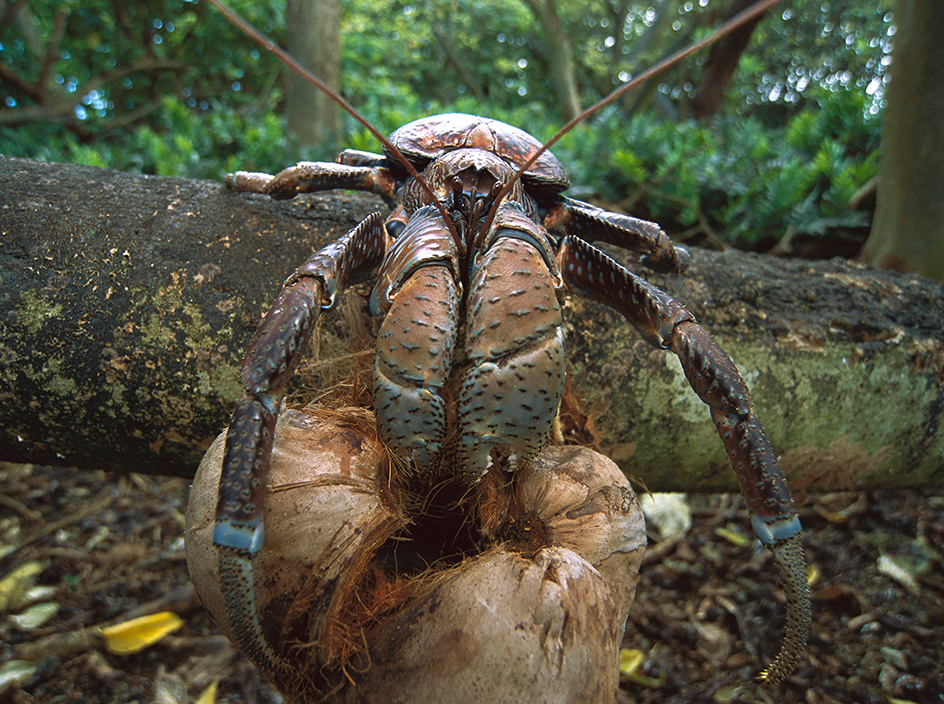Coconut crab, also called the robber crab, is the largest land crab in the world. It lives on tropical islands in the Indian and Pacific oceans. The body of an adult coconut crab typically measures about 16 inches (41 centimeters) long. From the tip of one leg to the tip of the opposite leg, the crab may reach more than 3 feet (1 meter) across. The coconut crab may weigh as much as 9 pounds (4 kilograms). It varies in color from speckled white and orange to speckled blue and brown.

The coconut crab has five pairs of legs. The first pair serve as large, powerful claws. These claws can crack open hard nuts. They can also tear apart other crabs. The crab’s fifth pair of legs keep its lungs clean of debris.
The coconut crab is called the robber crab because it is a curious explorer and may carry off items it finds. It is known for stealing food or even shoes that people leave outside their homes. The name coconut crab comes from the false belief that the crab will climb trees to collect coconuts. The crab does eat fallen coconuts.
The coconut crab is most active at night. It relies on its keen sense of smell to find food. The crab smells using its second pair of antennae. The first pair of antennae are long and act like whiskers. They help the crab to feel its way through the rain forest at night. Coconut crabs eat a variety of foods, including fruits, seeds, other crabs, and animal remains.
Females return to the ocean to lay eggs. The larvae (young) live in the ocean for three to four weeks. They then return to the land. The larvae live in abandoned snail shells until they reach about 1/4 inch (6 millimeters) long. Coconut crabs may live as long as 50 to 70 years.
